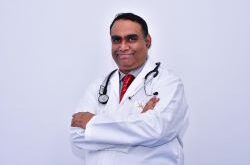Stroke is one of the most common and leading health conditions that causes mortality and disability to millions of Indians. The onset of the disease is caused by an absence or reduced blood flow to parts of the brain, which ends up resulting in a deprivation of oxygen in the brain’s tissues causing damage within the region. The severity of negative outcomes that are associated with the aftermath of a stroke leads to medical professionals emphasising on prevention over treatment.
Causes and Risk Factors
The onset of a stroke can be caused by a range of causes and risk factors that include the following.
● High Blood Pressure
● Heart Diseases
● Diabetes
● Age
● Family
● Tobacco Consumption
● Obesity
Strokes and Genetics
Diabetes, vascular disorders, and high blood pressure are predisposed by genetics shared by family members among the stroke causes and risk factors. It is observed that, if a family member has a history of having a stroke, a person’s susceptibility to the medical condition is significantly elevated. Considering these risk factors, it becomes extremely important to consider changing one’s lifestyle in order to improve protection and delay the start of a stroke. Risk factors for stroke such high blood pressure, diabetes, and obesity can be greatly reduced by adopting small lifestyle changes.
Warning Signs and Symptoms
The signs of an onset of a Stroke include areas of the face, leg, or arm becoming numb. Sometimes, when it involves a complete half of the body, Losing visual ability and trouble in vision, Severe headache with no specific cause, Confusion and inability to comprehend.
Diagnosis
Doctors perform a variety of the physical tests to identify the origin of a stroke if the warning signs and symptoms become severe.
● Blood Test to check cholesterol and blood sugar levels
● Checking Pulse to identify irregular heartbeat and blood pressure measurements.
● Brain Scans such as CT and MRI
● Swallow and Speaking Tests (Stroke impacts the ability to swallow and speak)
● Heart and Blood Vessel Tests
Treatment and Prevention
The therapy for a stroke is divided into two stages. The first stage includes urgent action, which entails eliminating the blood clot that is the cause of the stroke. Drugs like alteplase, which function as “clot busters,” aid in dissolving blood clots that interfere with the blood stroke process.
Once the stroke is treated successfully, medication such as Aspirin and Anticoagulants (medicines that prevent blood clots) are used to prevent the risk of future instances of a stroke.
Due to the fact that medications used to treat both high blood pressure and high cholesterol, such as cholesterol-lowering pharmaceuticals (statins), are a crucial component of the recovery phase following therapy for stroke.
Modifying Lifestyle and Stroke Prevention
The effects of a stroke—even when adequately treated—cause serious harm to one’s general health and quality of life. Therefore, medical experts highly advise making lifestyle changes that significantly reduce the likelihood of stroke risk factors. To measure and enhance cardiovascular health, the American Heart Association created the Life’s Simple 7 metric. The list consists of the following types of lifestyle adjustments.
● Reducing or no Smoking
● Regular Exercise
● Low-calorie healthy diet
● Reduction of blood pressure
● Reduction of cholesterol levels
● Weight Reduction
● Reduction of Blood Sugar
A healthy diet, regular exercise, quitting smoking and drinking, and weight loss are all aspects of lifestyle choices that enhance overall health and wellness. However, if the essential steps are not taken to prevent a stroke, recognising the signs should compel individuals to visit the nearest multi-specialty hospitals immediately for prompt treatment and prevention.
Dr Manish Patni, Consultant – Neurologist, HCG Hospitals, Bhavnagar
 Newspatrolling.com News cum Content Syndication Portal Online
Newspatrolling.com News cum Content Syndication Portal Online






